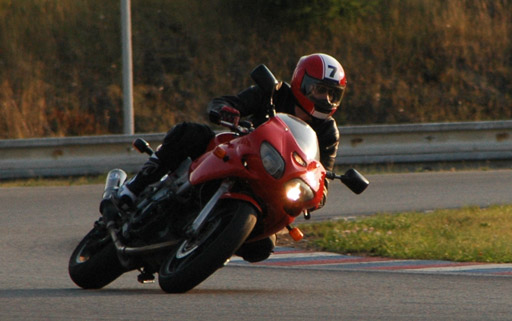You may have noticed that we have not one, but two CheckMate Pro models sharing the spot atop our home page this month. Vespa’s sleek cyclist looked lost without an equally impressive bike. So we started “shopping” the TurboSquid model catalog for just the right ride; the decision – a top of line Yamaha R6 superbike, created by 3D modeler Jamie Hamel Smith.
We chatted with Vespa (whose real name is Zdenek Vespalec) about the tools, textures and overall inspiration that drove him to create this stunning streetbiker.
When did you first realize you wanted to be a 3D artist?
It was probably in my teens around 2000, when this whole CGI thing was becoming more popular, widespread and affordable. I liked it very much, and when I discovered I could make a living out of my hobby, the decision was easy.
I see that you only have a couple of models at TurboSquid. Were these for a project, or for fun, or specifically for TurboSquid?
They are purposely made for Turbosquid. With the first one, I just wanted to see if it worked and was successful, which was surprising to me; meanwhile I got hired by a game development company and devoted myself to working for them. My dayjob is still my #1 priority, but from time to time I manage to squeeze in some work hours for TS. Today’s quality standards are much higher, so making the new character took quite a long time. That’s why I have only completed two, thus far. But more are in production.
 Why did you make motorcycle riders? Are you a rider yourself?
Why did you make motorcycle riders? Are you a rider yourself?
Yep, I ride. Lately I’ve done more off-road riding, instead asphalt. But, I figured that creating a model of a streetbike rider would be more desirable to customers. (That’s Vespa pictured on the right.)
We noticed that your models are published in 3ds Max software. Is that the only software you use?
Yes it is. I’m kind of conservative when it comes to the tools that I use. When I started with CG, 3dsmax was the most common software, so I kind of stuck to it.
I try to keep things very simple and game oriented, so any software capable of basic skeletons and skinning work well for me. However, I do use a number of secondary programs to make textures.
The creases on the rider’s clothes are very realistic. Tell us a little about the process you use to make these.
Thanks! They are sculpted manually from hipoly mesh, and then baked on lowpoly geometry. I consider clothing creases the most difficult thing there. I usually use photographs as a reference and try to mimic the way the fabric or leather flows. Thick leather tends to be easier and more forgiving, but I really admire those who are able to make good looking, soft clothing.
So, is that the model wearing “your” suit?
The actual suit is made-up, as I wanted to be careful not to infringe on any copyrights, but I tried to make it authentic looking. I do own one myself.


 Why did you make motorcycle riders? Are you a rider yourself?
Why did you make motorcycle riders? Are you a rider yourself?